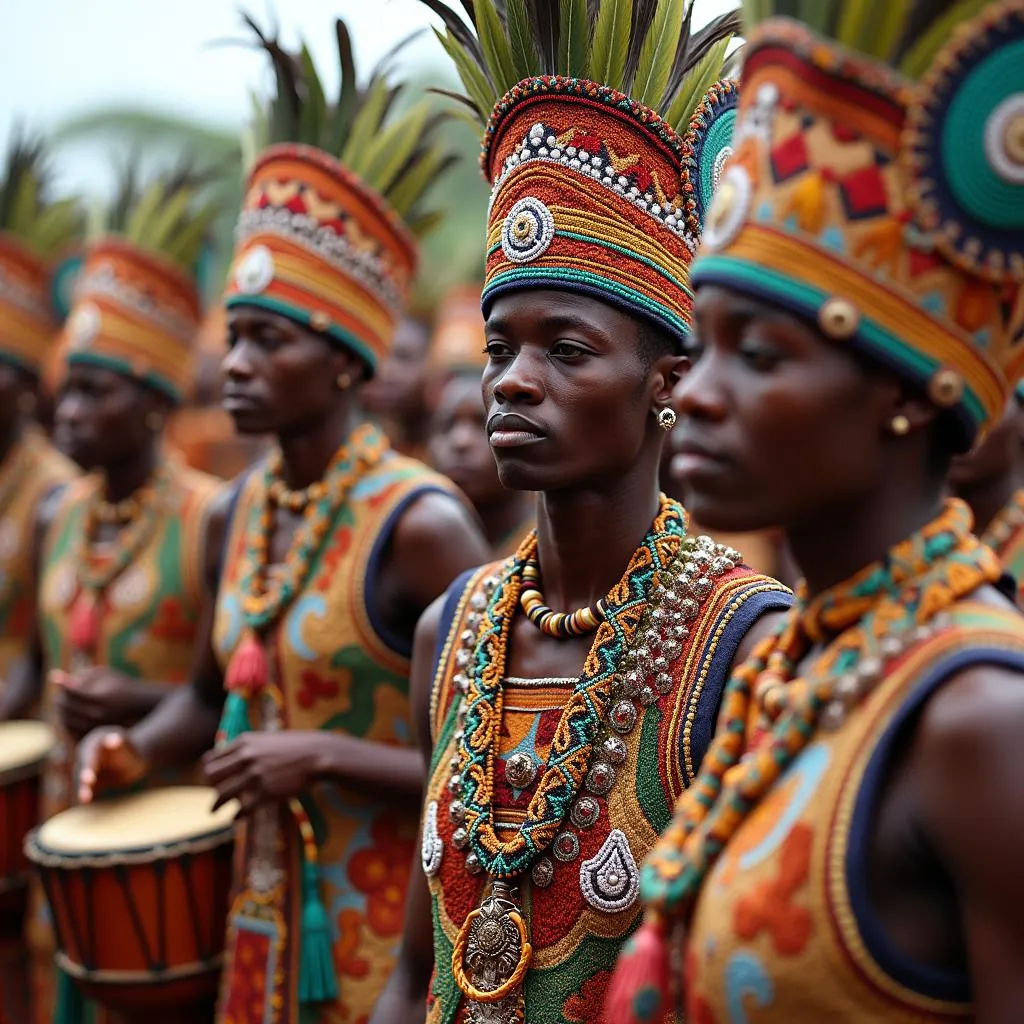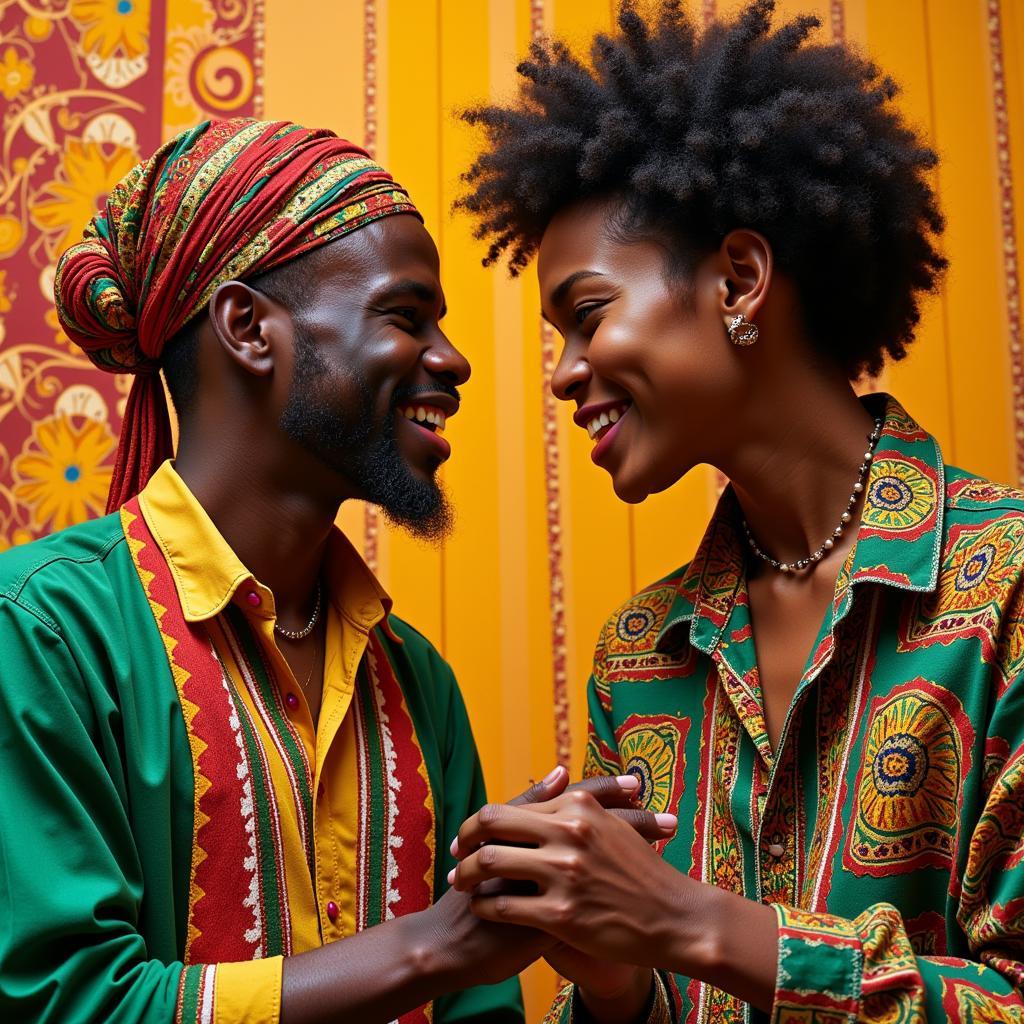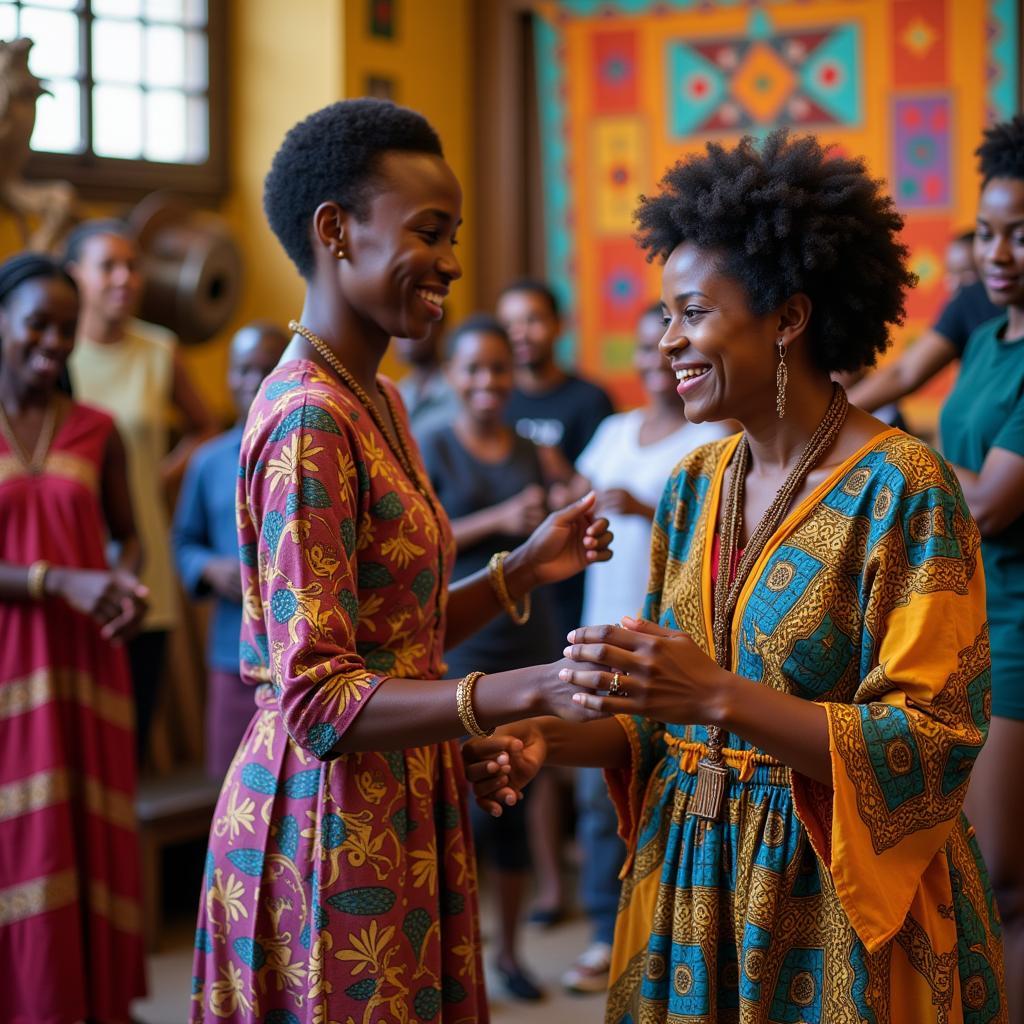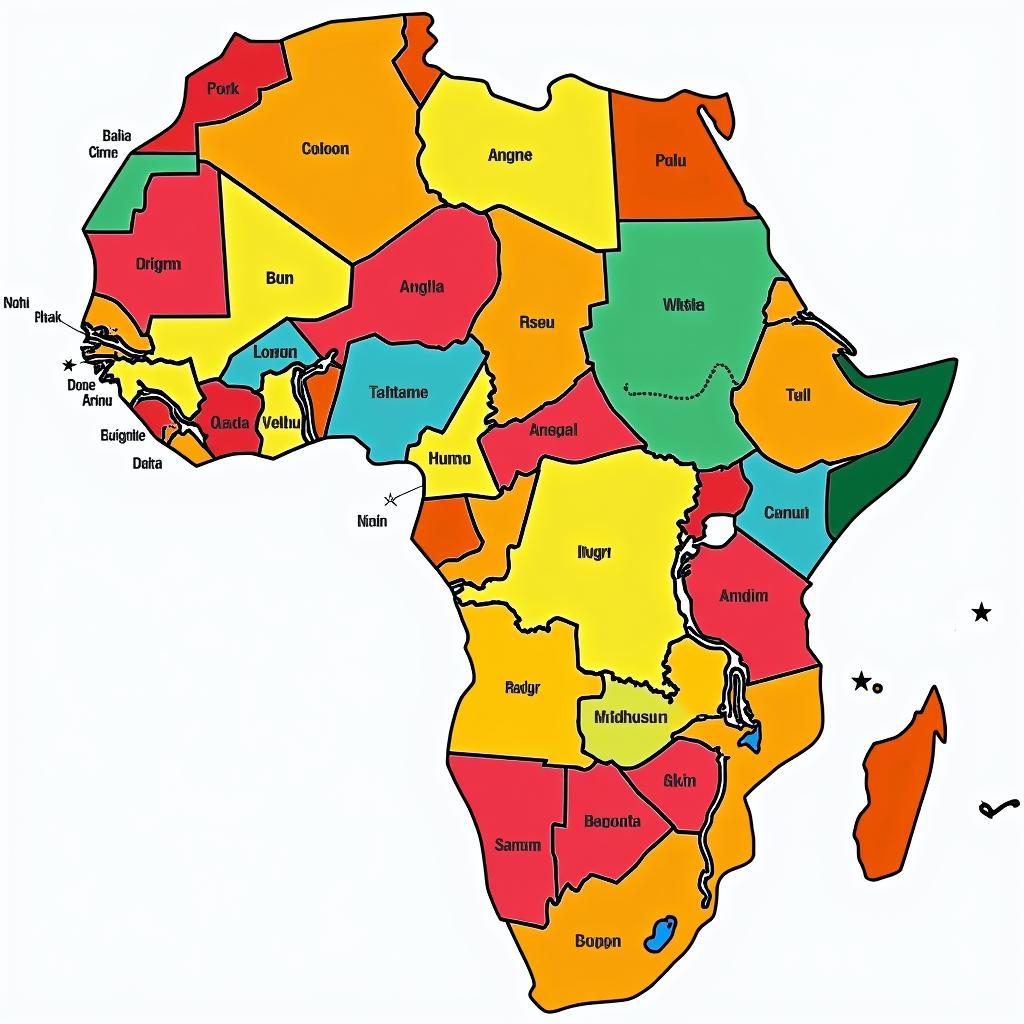African Culture Art Facts: Exploring a Continent’s Creative Spirit
African art is not a monolith; it’s a vibrant tapestry woven from the diverse cultures and traditions of over 50 countries. From ancient Egyptian hieroglyphics to contemporary sculptures, African Culture Art Facts reveal a rich history of artistic innovation and symbolism. This exploration delves into the fascinating world of African art, uncovering its unique characteristics, diverse forms, and enduring impact on the world.
Unmasking the Myths: What Makes African Art Unique?
One of the biggest misconceptions surrounding African art is its homogeneity. In reality, the continent bursts with a kaleidoscope of artistic styles, each reflecting the unique history, beliefs, and environments of its people. While some common threads run through these diverse expressions, like the emphasis on community, spirituality, and connection to nature, to categorize African art as a single entity is to overlook its magnificent complexity.
Beyond the Mask: Exploring Diverse Forms of Artistic Expression
African art extends far beyond the iconic masks often associated with the continent. While masks hold immense cultural significance, representing spirits, ancestors, or social roles in rituals and ceremonies, they are but one facet of a multifaceted artistic heritage. Other significant forms include:
- Sculpture: From monumental wood carvings to intricate bronze castings, African sculptures embody a wide range of styles and functions. They can depict ancestors, deities, rulers, or everyday life, often imbued with symbolic meanings and spiritual significance.
- Textiles: African textiles are renowned for their vibrant colors, intricate patterns, and diverse weaving techniques. From the mudcloth of Mali to the kente cloth of Ghana, textiles often convey social status, cultural identity, and historical narratives.
- Pottery: Functional yet beautifully crafted, African pottery traditions date back millennia. Each region boasts distinct styles, often adorned with symbolic patterns or used in ceremonial practices.
- Music and Dance: An integral part of African culture, music and dance are forms of artistic expression deeply interwoven with daily life, rituals, and storytelling. From the polyrhythmic drumming of West Africa to the intricate dances of East Africa, these art forms transmit cultural knowledge, celebrate life events, and foster community bonds.
African Culture Art Facts in a Global Context
African art has had a profound impact on the world stage, influencing artistic movements and inspiring artists across the globe. During the early 20th century, the bold aesthetics of African masks and sculptures played a pivotal role in shaping the visual language of Modernist art movements like Cubism and Expressionism.
Preserving Heritage, Inspiring Future Generations
Understanding African culture art facts is crucial not only to appreciate the continent’s artistic legacy but also to ensure its preservation for future generations. Sadly, many African art objects were looted during the colonial era and remain scattered in museums and private collections worldwide.
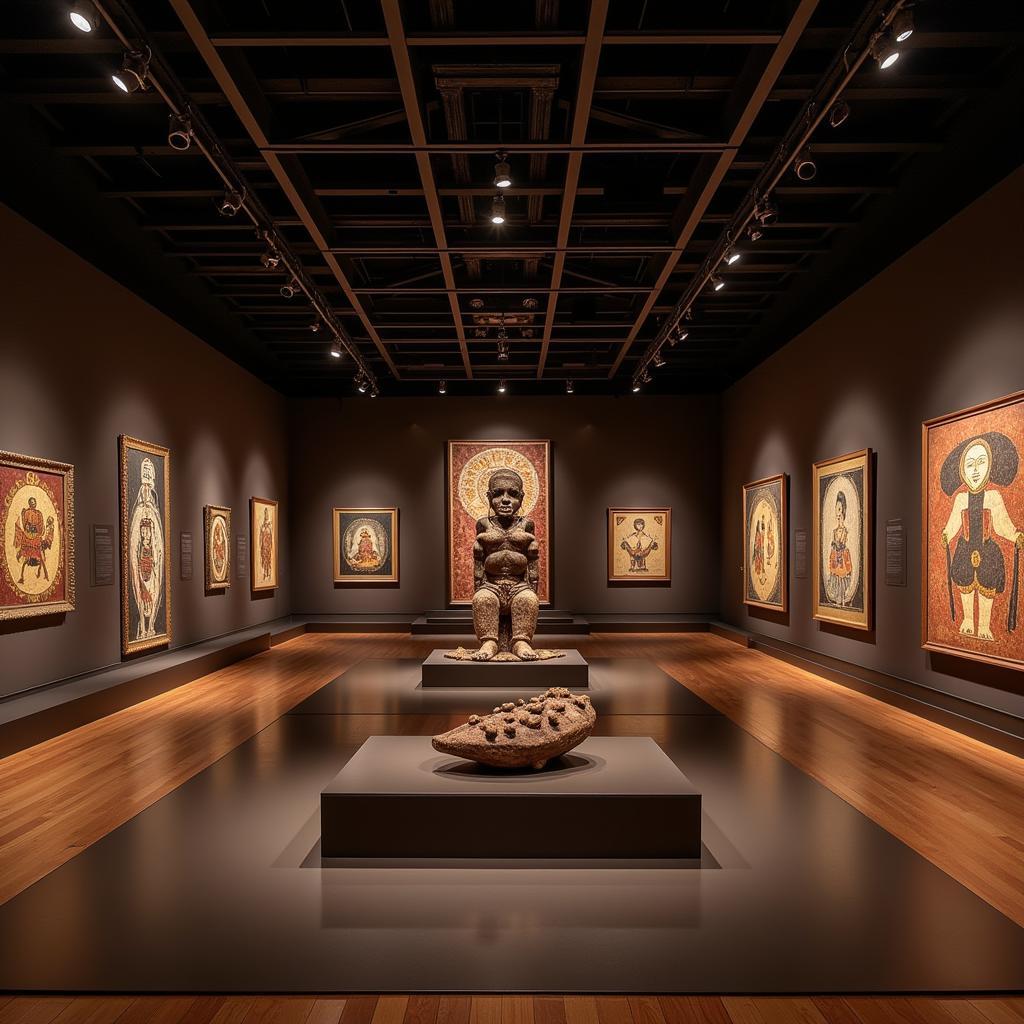 African Art Museum Exhibit
African Art Museum Exhibit
However, there is a growing movement to repatriate these stolen artifacts and support contemporary African artists. By recognizing the value of African art and supporting initiatives that promote its understanding and preservation, we can contribute to a more just and equitable appreciation of global art history.
FAQs about African Art
1. What is the oldest known African art?
The oldest known examples of African art are rock paintings found in various parts of the continent, dating back thousands of years. Some of the most famous examples include the Blombos Cave engravings in South Africa (estimated to be around 73,000 years old).
2. What are some common materials used in African art?
African artists utilize a wide array of materials, including wood, bronze, ivory, clay, textiles, beads, and natural pigments.
3. How is art used in African societies?
Art plays a central role in many African societies, serving both functional and symbolic purposes. It is often used in rituals, ceremonies, storytelling, social commentary, and everyday life.
4. Are there any contemporary African artists I should know?
The contemporary African art scene is thriving, with numerous talented artists pushing boundaries and gaining international recognition. Some notable figures include El Anatsui, Yinka Shonibare MBE, Wangechi Mutu, and Julie Mehretu.
5. Where can I see African art?
You can find African art displayed in museums and galleries worldwide. Many institutions have dedicated African art collections, showcasing a wide range of historical and contemporary pieces.
Exploring Further: Delve Deeper into African Art
Want to learn more about the intricacies of African art and culture? Check out our articles on:
Connect with the Spirit of Africa
African culture art facts offer a window into the soul of a continent, revealing its rich history, diverse traditions, and boundless creativity. By engaging with African art, we embark on a journey of discovery, understanding, and appreciation for the profound impact this art form continues to have on the world.
Need assistance? Contact us:
- Phone: +255768904061
- Email: kaka.mag@gmail.com
- Address: Mbarali DC Mawindi, Kangaga, Tanzania.
We have a 24/7 customer support team ready to help.
